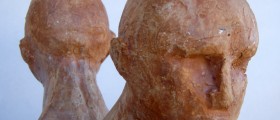Overview
Masses involving the clitoris in females may cause the tissue to seem abnormally swollen and enlarged. This can cause some concern in parents of younger affected children and in older children themselves, but being informed of what these issues are will at least help provide some relief in knowing that they are problems that can be managed effectively enough.
It's important to note that doctors and any other healthcare professionals examining children with enlarged clitorises should take a detailed history from the patient and their parents as well as perform a thorough and careful examination of the genitalia of the patient. The person performing the examination should also make notes on the other systems of the body and the secondary sexual characteristics of the patients if they started, are in, or have completed puberty.
The reason for the attention to details, especially when examining these patients, is in order to spare children from having invasive investigations performed on them and to avoid delays in treatment of the specific cause of the problem.

Epidermoid cysts
The clinical presentation of these cysts may include signs and symptoms such as:
- Painless swelling involving the clitoris.
- A gradual increase in the size of the swelling.
- A mobile mass that is firmly attached to the base of the clitoris.
- Normal skin covering the antero-lateral part of the mass and mucosa covering the dorsum.
- Normal vaginal and urethral openings.
The contents of the mass are then sent to the histopathology lab to confirm that the mass was indeed an epidermoid cyst.
Causes of clitoromegaly
The causes of an enlarged clitoris can be divided into four groups. It's very important to be able to differentiate between these causes as the management of the clitoral enlargement will depend on these factors.
Hormonal
Endocrinological pathologies and cancers may cause hormonal fluctuations which affect the size of the clitoris such as:
- Androgenital syndrome.
- Congenital adrenal hyperplasia.
- Steroid-producing gonadal tumours.
- Bilateral hilus cell tumour of the ovary.
- Leydig cell tumours of the ovaries.
- Adrenal androgen secreting carcinoma.
- Metastatic carcino-sarcoma of the urinary bladder.
Non-hormonal
- Neurofibromatosis.
- Nevus lipomatous cutaneous superficialis.
- The mentioned epidermoid cyst.
Pseudo-clitoromegaly
This group consists of masses that involve the structures around the clitoris making it seem like the mentioned area is affected. These may include:
- Urethral pathologies.
- Swelling of Skene's glands which are located around the urethra just under the clitoris.
- Bartholin's gland issues such as swelling, infection, or abscess formation involving this anatomy.
Idiopathic
This is the classification that is given to clitoral enlargement where no real diagnosis of the cause of the problem can be made.
- www.ncbi.nlm.nih.gov/pmc/articles/PMC3863840/
- Photo courtesy of SteadyHealth















